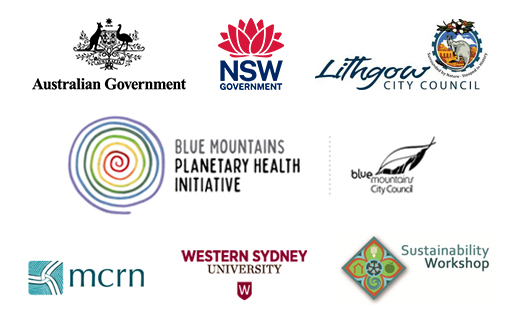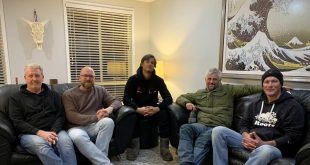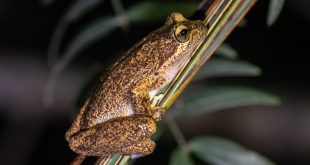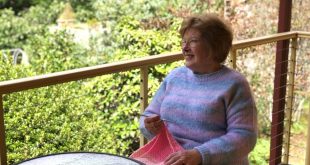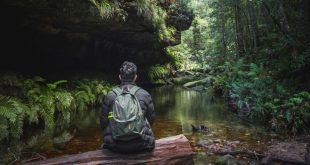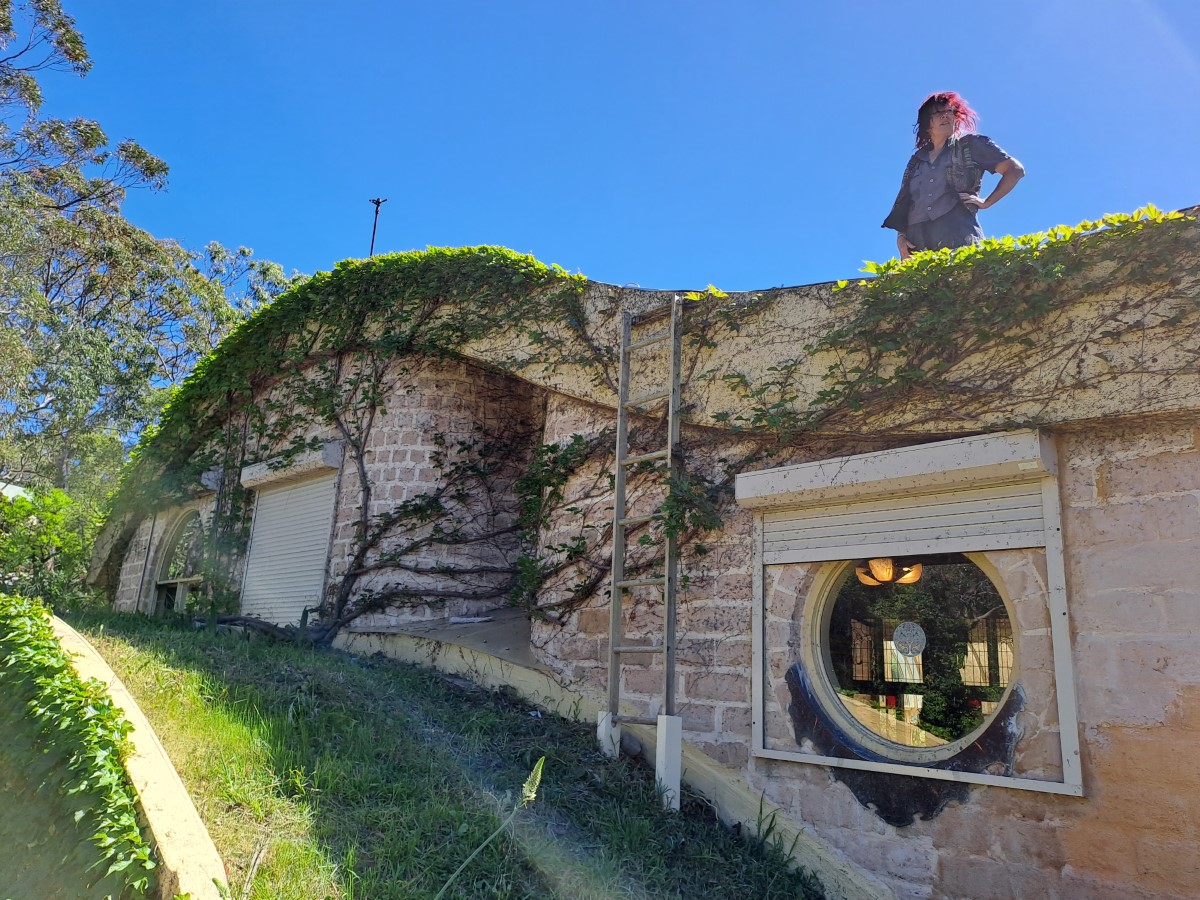
Marilyn Pride at her mudbrick green roof home in Linden
Story and photos by Belle Butler
A green roof, with soil and a vegetation layer, reduces energy use, boosts biodiversity and reduces bushfire risk. Read about a home in Linden where the owners have enjoyed the benefits of their green roof for over 30 years.
Key Points:
- A house with a green roof doesn’t take land space away from nature
- Green roofs reduce heating, cooling, fire risks, pollution and stormwater runoff
- Biodiversity increases with green roofs.
Taking a bird’s eye view of Marilyn Pride and Lewis Morley’s home in Linden, you might wonder if you are looking down at a house at all. The usual hard surfaces of rooftop and edge are nowhere to be seen. Instead, there are the undulating, soft and blended curves of grass, flower and earth. Here, the stark contrast of development upon nature is avoided by integrating nature into development, in the form of a green roof.
Marilyn and Lewis built their mudbrick home in 1992. They originally wanted a thatched roof, but that being an impossibility due to fire risk, they discovered the benefits of topping their home with soil and vegetation instead.
“A green roof doesn’t take away from the footprint of the land. It’s still got plenty of greenery and foraging plants for the bees up there, so it’s keeping the same land space for growing.” – Marilyn Pride
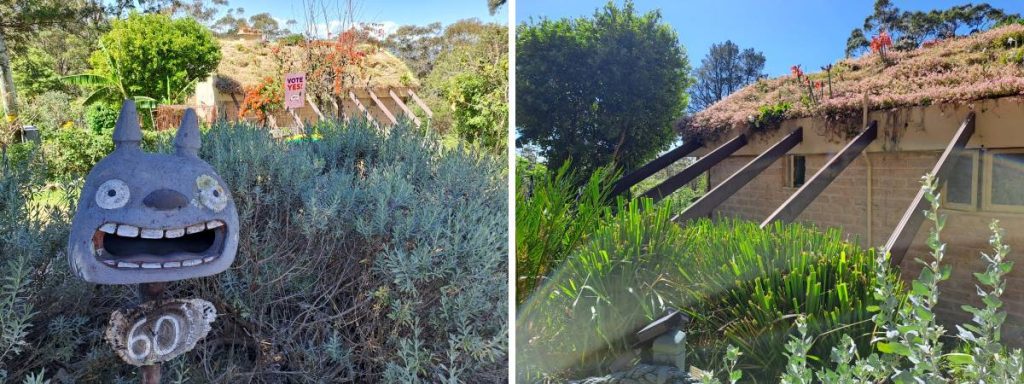
Left: Totoro the ‘nature spirit’ is an intentional symbol of environmentalism that welcomes you to Marilyn and Lewis’ house. Right: Marilyn and Lewis’ green roof house blends in with surrounding vegetation.
This rationale is echoed by eco-architect and artist Friedensreich Hundertwasser who was renowned for his strong advocacy for green or ‘afforested’ roofs. He inspired many small and large scale ‘afforested’ developments around the world.
“It is our duty to put the nature, which we destroy by building the house, back onto the roof. We must give territories back to nature which we have taken from her illegally.” – Friedensreich Hundertwasser
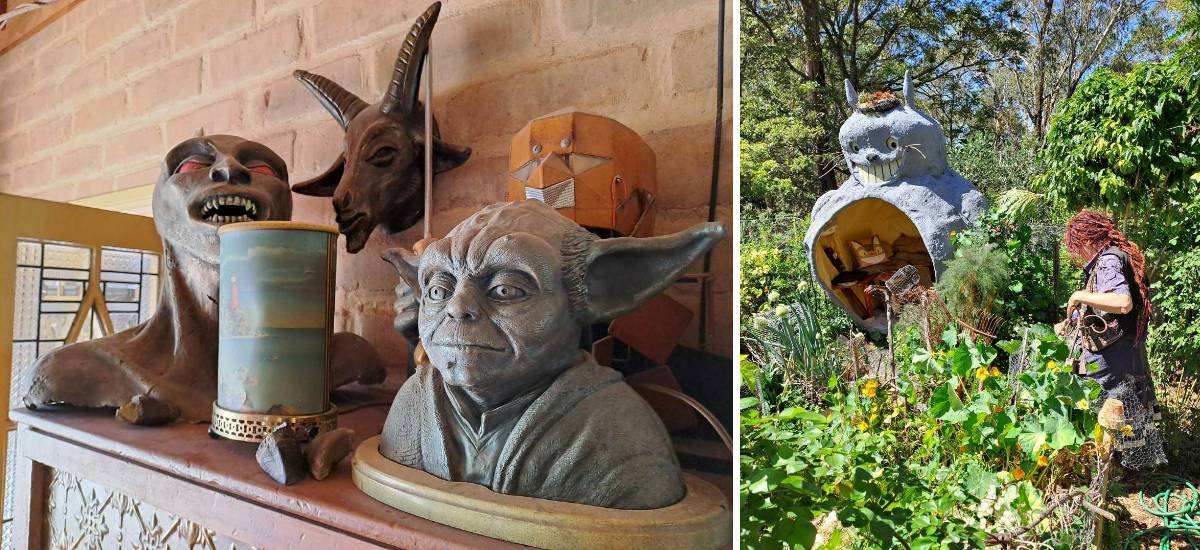
Left: Some curiosities from Marilyn and Lewis’ work in the film industry. Right: Marilyn in her garden with a giant Totoro sculpture/cubby space Lewis created.
Visiting Marilyn and Lewis’ house is, indeed, a bit like visiting a Hundertwasser creation. Flowers bask in the full sun upon their roof, and inside the place is full of artistic quirks and curiosities from their time working in the film industry making sculptures and sets. “The local kids call it the Linden Museum,” Marilyn says. The sweeping curve of their roof is a particular treat for the eye. But aesthetics aside, Marilyn and Lewis’ green roof serves multiple environmental functions.
According to an Australian government guide to sustainable housing, green roofs:
- provide improved insulation, which reduces heating and cooling needs
- help with stormwater management by reducing and slowing runoff
- absorb noise
- produce oxygen and capture carbon
- absorb gaseous and particulate pollutants
- reduce the urban heat island effect
- increase biodiversity
Marilyn cites most of these facts when rationalising her decision to build a green roof, and the payoff has been noticeable. Her roof provides habitat and food for various creatures, including countless insects and the native antechinus. It also keeps the human inhabitants beneath it comfortable all year round. “We don’t have any air conditioning,” Marilyn says. “We have metal shutters for fire protection and to block out heat, and that’s it.”
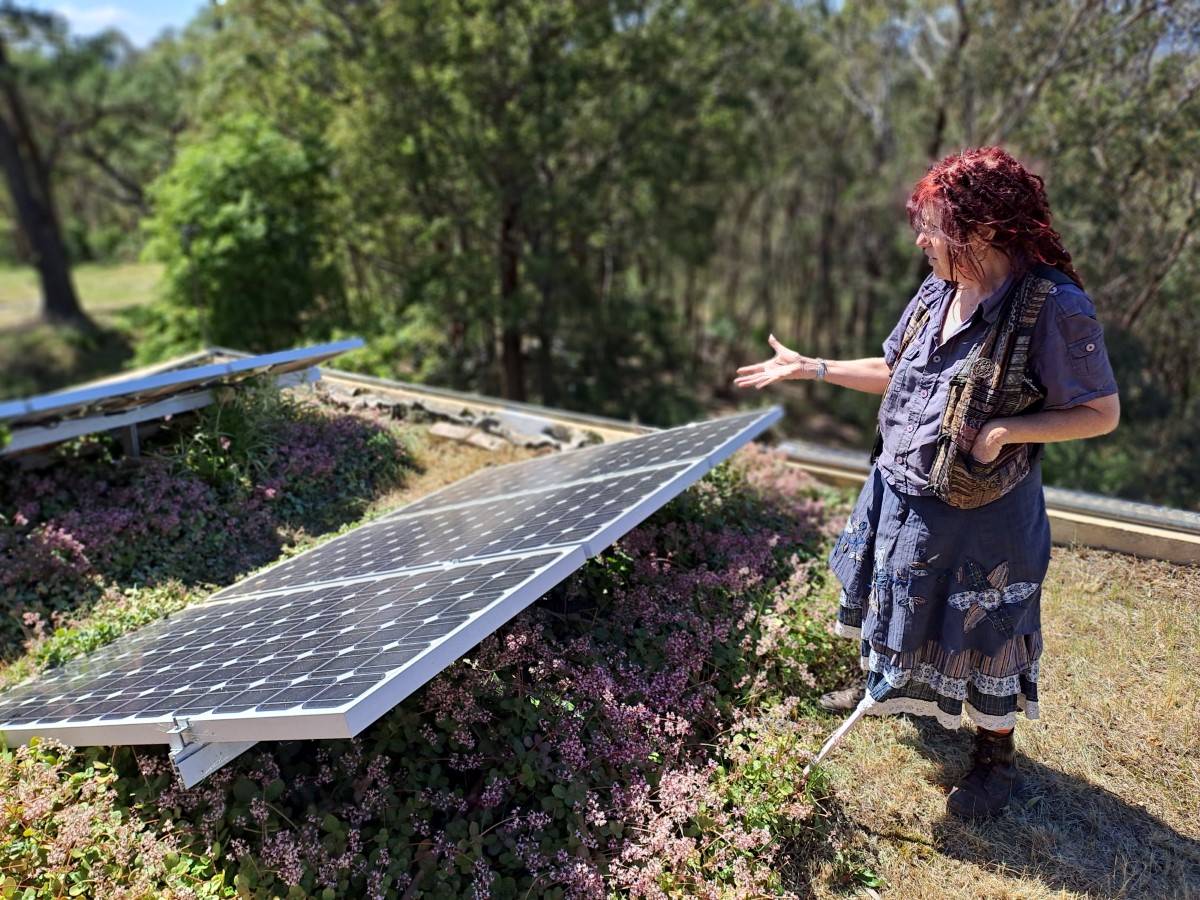
Green roofs can also accommodate solar panels.
A green roof’s capacity to reduce the heat island effect is a significant benefit for individuals and whole communities alike as we face hotter seasons ahead. While the hard surfaces of conventional roofs store and radiate heat, green roofs actually take heat out of the air via evapotranspiration.
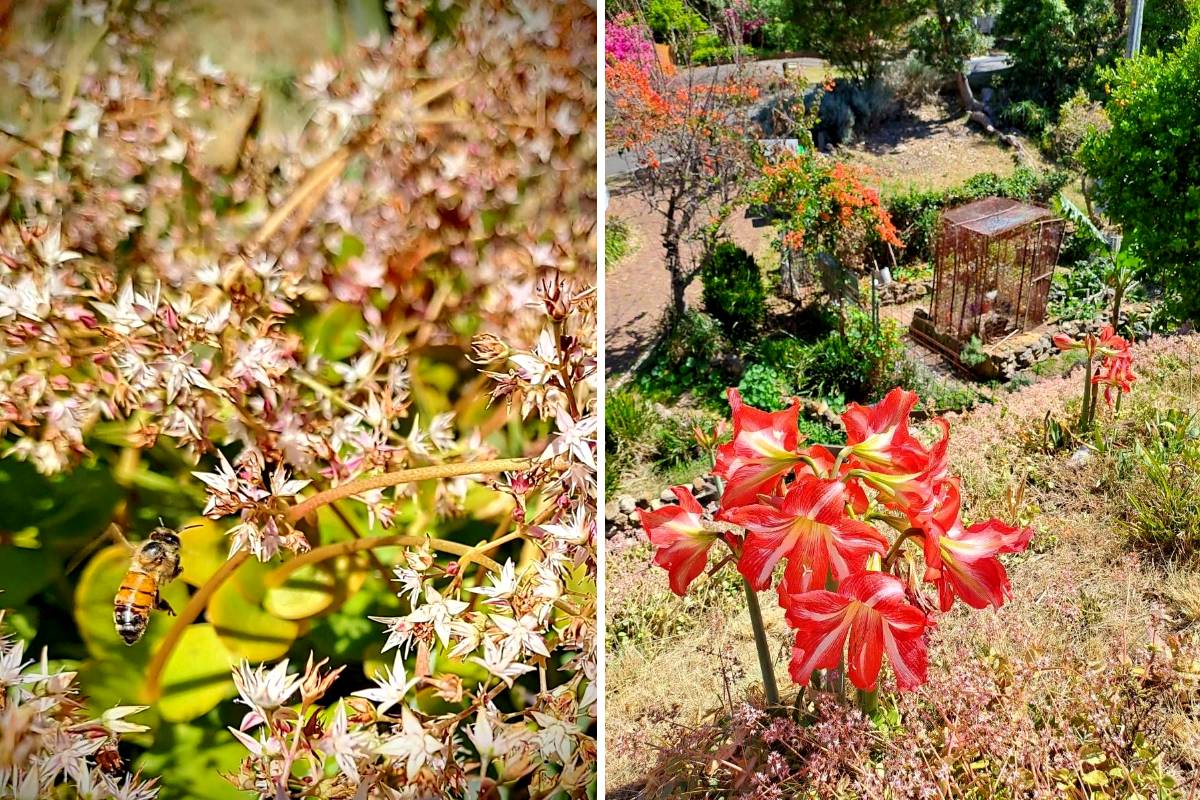
Left: Spot the bee among the rooftop flowers. Right: Flowers basking in the sun on Marilyn and Lewis’ green roof.
Another clear benefit of the roof is that it is resistant to fires. “Green roofs are inherently more fire resistant that conventional roofing,” says architect Nigel Bell of ECOdesign Architects, who has been familiar with Marilyn and Lewis’ home since shortly after its construction. “Earth is solid, always more than 90 mm thick, which is all you need for the most intense fire. Theirs (Marilyn and Lewis’) is 300mm. The low vegetation on top will burn, but it’s not a big deal. The thick earth will protect everything underneath.”
Fire is a consideration Marilyn and Lewis have taken seriously on their property, adopting practical steps to reduce the risk. Aside from opting for a green roof, Lewis replaced all wooden gates on the property with his own custom-made pressed metal gates; they used metal materials in the construction of their deck; they installed a large, metal-walled water tank and petrol-powered pump, which feeds a sprinkler system on the roof; and they installed metal shutters on all external windows.
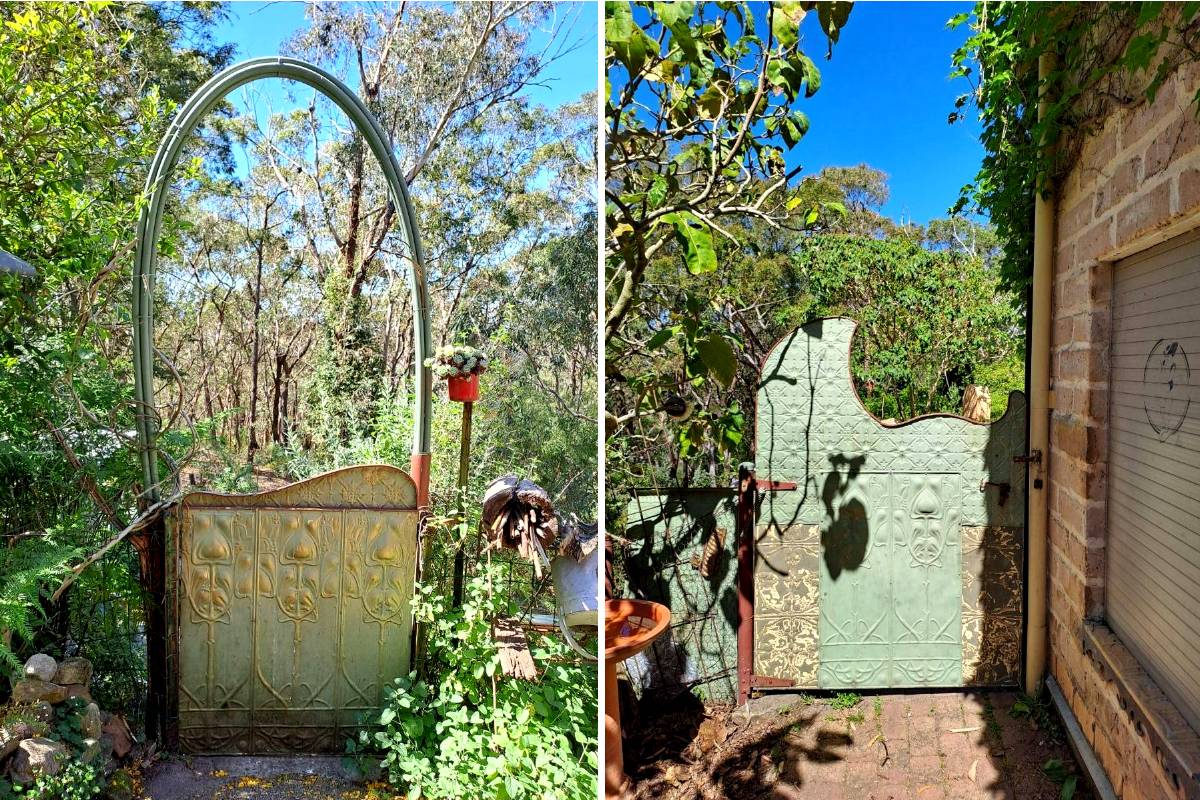
Lewis created pressed metal panel gates in place of the original wooden ones in order to reduce fire risk.
Despite the clear benefits of having a green roof, they are not a common sight. Nigel suspects one possible imposition is the need for an experienced engineer to do this specialised work. Marilyn also cites getting the weight-bearing right as an important aspect of any green roof build. In the case of their Linden home, using load-bearing mudbricks made the project more feasible.
In terms of upkeep, Marilyn occasionally tends to her roof with a whipper-snipper and provides additional watering if there isn’t much rain. She mostly keeps low maintenance succulents up there, which are also a wise choice in the event of fire. The occasional leak has occurred, usually due to wandering grass roots, but these are easily fixed by pulling up the layer of earth where the leak is and replacing the waterproofing sheet underneath.
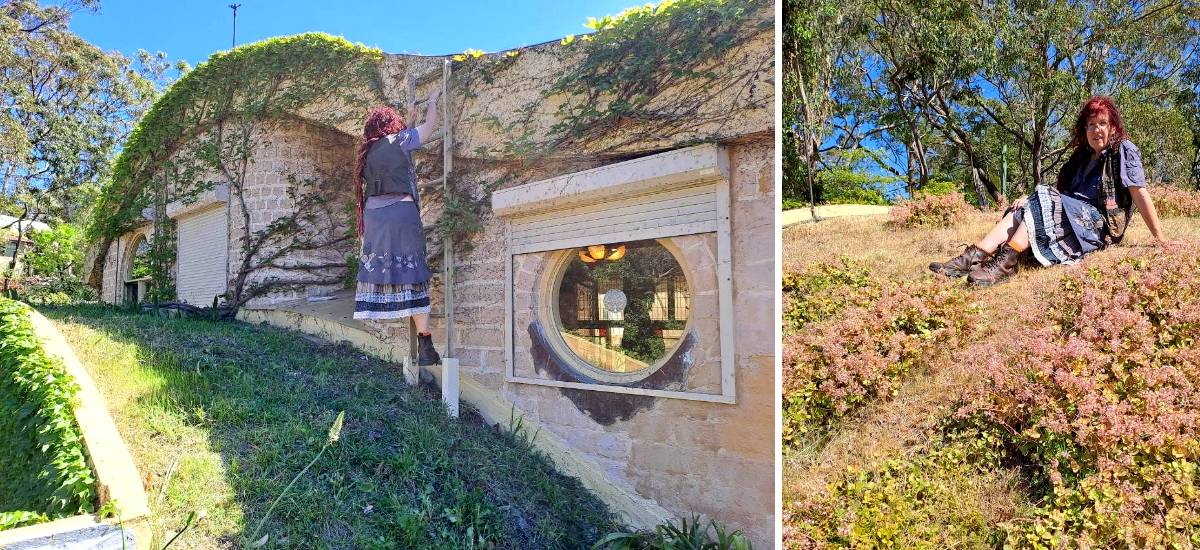
Left: Marilyn climbs up a ladder to the top of her green roof. Right: Marilyn sitting on the hill of her roof.
Perhaps the most underrated perk of a green roof is the delight in sitting on top of it. After our conversation, Marilyn and I step onto the flat roof of her garage where she once grew potatoes and now keeps a healthy crop of spring onions. We then climb a small ladder to the main roof, and I delight in walking to the top of it, just as I might any grassy hill. The insects are busy foraging. The sun is warm. As I sit on the gentle slope I contemplate having a nap among the bees.
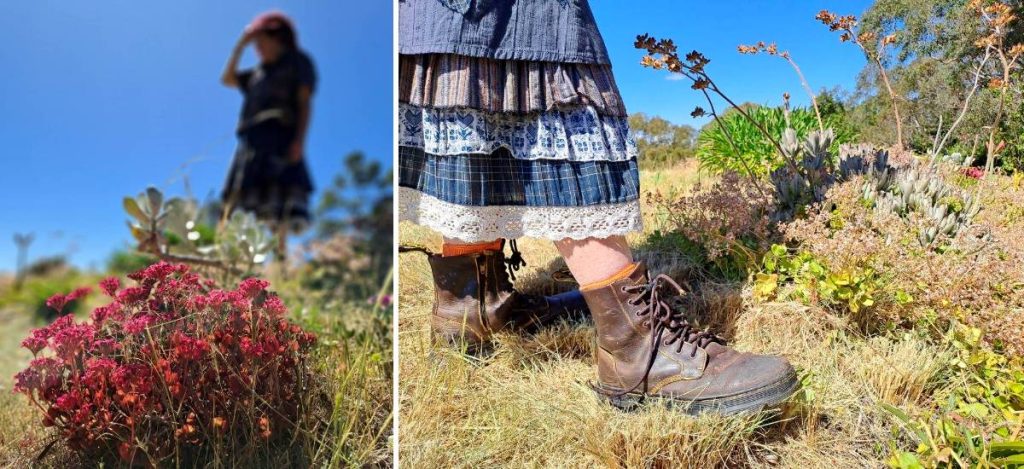
There is a special delight in walking on a grassy roof.
Take Action:
Share this article:
This story has been produced as part of a Bioregional Collaboration for Planetary Health and is supported by the Disaster Risk Reduction Fund (DRRF). The DRRF is jointly funded by the Australian and New South Wales governments.
